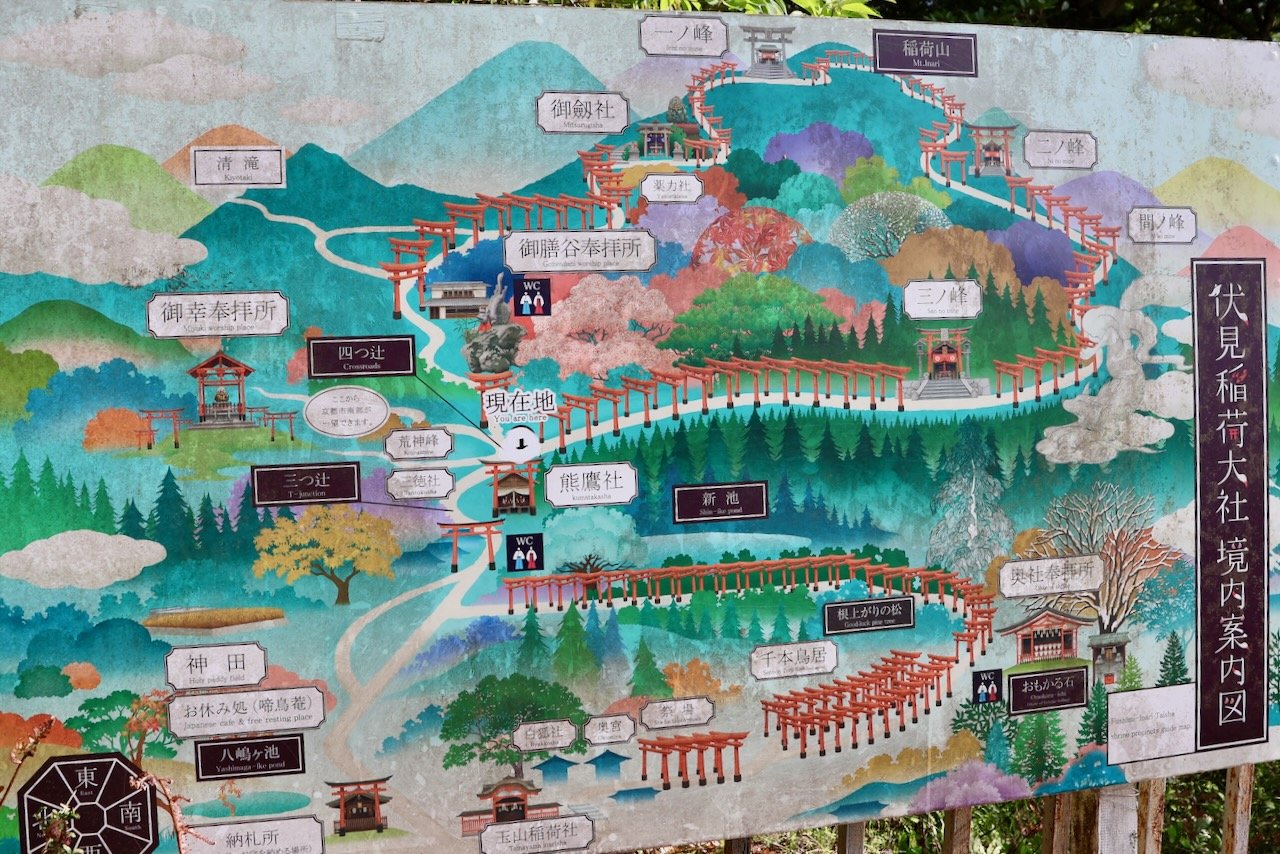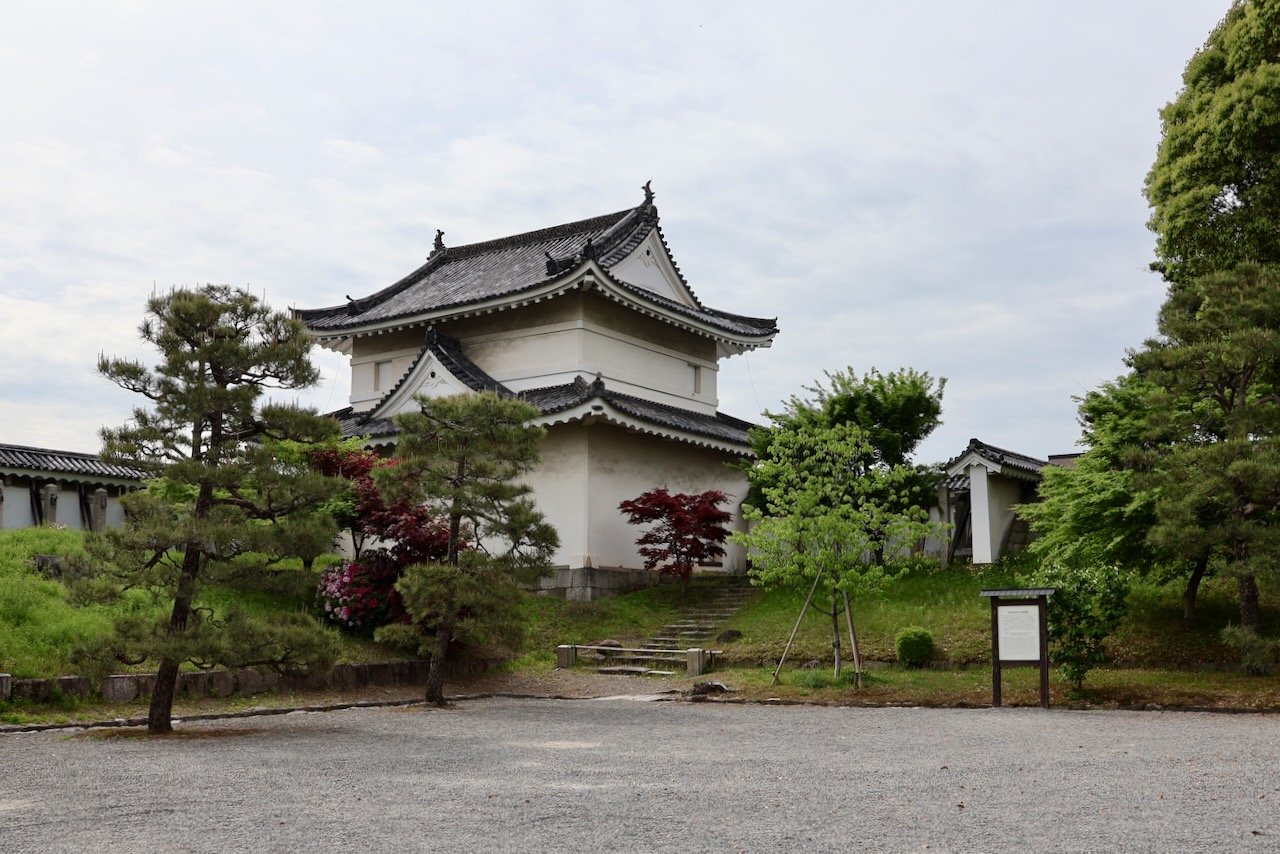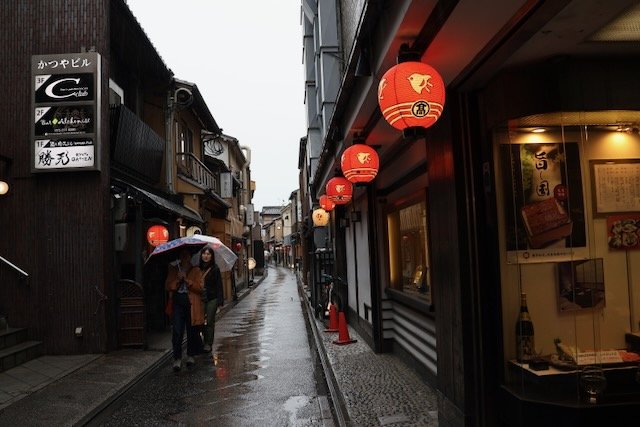Japan | Kyoto (Days 8 - 10)
Kyoto Day 1
After a quick train from Hiroshima, we arrived in Kyoto and were immediately overwhelmed by the scale of Kyoto Station. As with many major stations, it’s also a mall and kind of a mini city in itself, with layers upon layers of shops, platforms, and escalators going in all directions. For lunch, we stopped at, of all things, a pasta place. But the menu was unlike anything you’d find in a typical Italian restaurant. I had a bacon, enoki, and shiitake mushroom dish topped with an egg yolk and thought it was quite good. The two Italians in our group, however, were less impressed with the meal.
After dropping our bags at the hotel, we headed over to the iconic Fushimi Inari Shrine, famous for its tunnel of thousands of bright orange Torii Gates that wind up the mountain through the forest. We began our climb with high ambitions to get to the top, pausing often to take photos and trying to time our shots in between waves of crowds. At one point, we spotted a monk climbing the stairs in traditional shoes with a single tall platform beneath them. Incredible balance, and my feet hurt just watching him.
We made it to what we thought was the top, only to realize – thanks to a dispiriting map and the shared dismay of multiple other tired tourists – that we were only halfway there.
See if you can spot the tiny ‘you are here’ arrow that indicated our midway point of despair.
After heading up a little ways further, we decided to turn back to save our aching feet and make our way down. On the way, we spotted a couple of cats lounging on the stones, which gave us a little morale boost as we progressed down the endless flights of stairs.
After a rest, we headed to dinner at Miyagawa Tonemon, a place that specializes in high-quality pork tonkatsu. Not outrageously priced, but the quality so good. The breading was ultra-crispy, the pork perfectly tender, and though there were a dozen different sauces and condiments, it honestly didn’t need much extra seasoning. We finished with a complimentary scoop of intensely flavorful yuzu sorbet, which was an utter delight.
We walked off the meal by wandering through Teramachi Market, a covered shopping arcade that runs through several blocks of Kyoto’s commercial heart. It was late, so the shops were shuttered and the floor was still. We peeked down side streets lit by soft glowing lanterns and eventually wound our way back to the hotel, eager to explore more of Kyoto.
Kyoto Day 2
Day 2 began with a visit to Nijo Castle, an impressive example of Edo-period power dynamics. It was built by the shogun as a very deliberate architectural flex – visually asserting dominance over the emperor (whose own palaces sat nearby). The castle’s layout also revealed some of the social hierarchy dynamics of the time: low-ranking visitors were received in the less ornate, distant rooms, while the more important you were, the closer into the center you were invited. The surrounding gardens were also lovely, peaceful and well-groomed, and we walked up along the stone walls overlooking the moat.
Next was the Kinkaku-ji Golden Pavilion. It was originally built as a shogun’s vacation retreat before being converted into a Zen Buddhist temple. Despite the overcast skies, the temple itself still shimmered and was reflected in the mirror Kyoko-chi Pond beneath. The crowds, however, were no joke. It was beautiful, but hard to feel serene when packed in shoulder to shoulder with tour groups.
The temperature dropped, and rain began to fall just in time for our free walking tour with Kyoto Localized, led by a cheerful and undaunted guide named Ayumi. We learned about Pontocho, one of the city’s historic entertainment districts, and how the bird symbol on the lanterns marks the presence of geisha houses. The Gion Shinbashi streets were particularly pretty in the rain – stone-paved, willow-lined, and softly glowing under lanterns.
We then climbed (and climbed) up to Chion-in Sanmon, one of the largest temple gates in Japan. Ayumi joked that Buddhist temples have so many stairs because if you suffer in this life, you reach nirvana in the next. The steps were high, the kind where my knees practically came up to my chest as I ascended. Once we caught our breath at the top, we took shelter beneath an awning and amused ourselves by to watching an especially stern and grumpy security guard striding repeatedly across the square to tell off visitors for not removing their shoes in the proper area.
We moved into the older part of town next, and while it was full of traditional wooden houses and historic charm, I didn’t get many pictures – partially because I was soaked and cold, partially because I was trying to protect my camera lens from the unrelenting rain while dodging umbrellas left and right. Despite the weather, it was still so crowded. Eventually, we reached a beautiful temple promising sweeping views, but between our freezing fingers, the foggy rain, and the looming staircase to reach it, we decided to call it and head back to the hotel to warm up.
A small sampling of what the streets were like. This makes it look less crowded than it actually was.
That night, we regrouped and headed to dinner at Kyo-no-Yakiniku-Dokoro Hiro Pontocho, a yakiniku spot recommended by a friend of mine. It delivered. The cuts of beef were melt-in-your-mouth tender, beautifully marbled, and grilled right at the table. It was warm, cozy, and absolutely satisfying – exactly what we needed after the cold and rainy day.
Kyoto Day 3
We rose at 7:00 AM to get an early start for a half-day trip to Arashiyama, hoping to catch the bamboo forest before the crowds. Alas, we... did not quite beat the crowds. But even with a steady stream of people, it was still a beautiful place – towering green stalks filtering the morning light, swaying gently in the breeze. After winding our way through, we found a sunny viewpoint overlooking the Katsura River, then made our way down across the bridge to enjoy the river views.
From there, we took on the steep 20-minute climb to Iwatayama Monkey Park, perched on a hill above town, and filled with Japanese macaques (yes, the same kind that you’ve probably seen relaxing in hot water springs). It was so worth it. I could’ve watched those monkeys for hours. The adults spent most of their time trying to wrangle the energetic little ones, often grabbing them by a single foot as they tumbled around. The young monkeys were endlessly entertaining, bounding across the rooftops, leaping across large gaps just for the thrill of it, and running back and forth as if to say, “Watch this again!” Every now and then, a little squabble would break out between groups and they’d all start shrieking in this very human-like way that made everyone around jump. Oh, and the views from the top of this hill overlooking Kyoto were quite pretty as well.
We wandered back into the town’s backstreets for lunch and found a small spot serving Japanese curry. The chef and owner was incredibly kind and recommended his favorite dish on the menu – katsu curry with rice. After a morning of climbing hills and chasing monkeys with the camera, the meal was especially cozy and delicious.
In the afternoon, we headed back into Kyoto and spent a long time shopping at Teramachi Market and Nishiki Market – both packed with interesting finds, delicious smells, and narrow corridors you can happily get lost in. I picked up gifts for friends and family (while trying not to think about how I was going to fit them all in my suitcase). My favorite find? A black and silver Sukajan jacket embroidered with tiny wrens. I’m thrilled with it.
Before dinner, we strolled through the massive Kyoto Imperial Palace grounds to enjoy sunset – which was the residence of the Emperors of Japan for hundreds of years until that seat and the capital moved from Kyoto to Tokyo in the late 1800’s. While there, I spotted a woman standing at the emperor’s gate, placing her hands together in prayer, bowing once, and then departing on her way. We’d learned on our Kyoto walking tour that the emperor was essentially once considered a living god and the head of the Shinto religion – so it was quite interesting to witness this moment. Before this trip, I didn’t know much about Shinto, and I certainly didn’t expect it to be such a present and active part of modern Japanese life.
Dinner that night was at a cozy izakaya called Marufuku, not far from our hotel, where I enjoyed some soba noodle soup and delicious salmon sushi. I’m continuing to be surprised by how affordable these meals have been – definitely feel like I’m going to get sticker shock from NYC prices once I return.
If I’m ever lucky enough to return to Japan, spending more time in Kyoto would certainly be a good motivation. I loved getting to see what we saw, but I feel like I only scratched the surface and there’s so much more to discover (and, of course, eat!)

















































